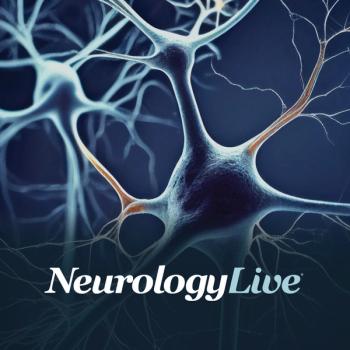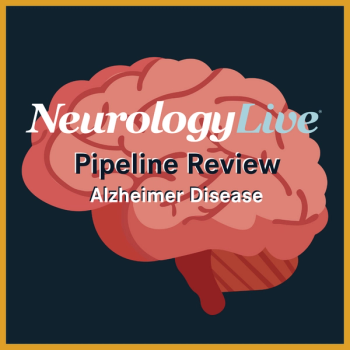
Harmony aligned with the FDA on the proposed phase 3 design elements, which is expected to kick off later this year.

Marco Meglio, Assistant Managing Editor for NeurologyLive, has been with the team since October 2019. Follow him on Twitter @marcomeglio1 or email him at [email protected]

Harmony aligned with the FDA on the proposed phase 3 design elements, which is expected to kick off later this year.

The findings provided safety and tolerability data for using liothyronine in future, larger studies of multiple sclerosis, with the potential to be observed in combination with other therapies.

Intravenous thrombolysis with recombinant human prourokinase resulted in a 16.4% lowered risk of systemic bleeding in comparison with alteplase treatment, which was consistent with previous phase 2 data.

With the new update, cladribine, glatiramer acetate, and rituximab, are now included in the Lists of Essential Medicines, filing a gap given the global burden of multiple sclerosis.

Andreas Muehler, MD, and Hella Kohlhof, PhD, provided answers on a recently published analysis showing considerable activation of nuclear receptor related 1 with vidofludimus calcium, an agent in development for various forms of multiple sclerosis.

The findings confirmed and expanded upon existing literature by demonstrating that the incidence rates of multiple cardiovascular events, including stroke, heart failure, and cardiovascular disease, are significantly higher in patients with narcolepsy.

Mind Moments®, a podcast from NeurologyLive®, brings you exclusive commentary from Alberto J. Espay, MD, PhD, and Anton P. Porsteinsson, MD. [LISTEN TIME: 48 minutes]

Completion of the 12-week program was associated with reported improvements in overall changes in sleep parameters of sleep latency, wake after sleep onset, sleep efficiency, and others.

The phase 1/2a studies are expected to be complete by the end of 2023, with data from the open-label extension studies to be shared in early 2024.

The director at the Foundation for the National Institutes of Health provided perspective on the effective ways to utilize currently available biomarkers for Alzheimer disease research.

In a patient case with tandem occlusion, treatment using the Zoom 88 Support resulted in reduced NIHSS score from 20 to 0.

Differential diagnosis consideration for MS requires a circumspect approach dependent on the clinical presentation and accompanied by vigilance for clinical and paraclinical red flags suggesting alternative diagnoses.

A duo of experts provide insight on various topics related to the advances in treatment options, diagnosis of the disorder, role of genetics, and potential future research and gene therapies.

In comparison with sham, patients on active treatment had higher rates of penumbral tissue salvage and alleviation of hypoperfused ischemic regions.

At 19 weeks, eplontersen-treated patients showed substantial and sustained reductions in serum TTR concentration compared with baseline.

Based on the positive findings, the company intends to submit a new drug application to the FDA before the end of 2023, with regulatory filings in additional markets to follow in 2024.

Although popular at the turn of the century, the use of platform injectable therapies has subsided significantly with the introduction of oral agents, with became the most frequently initiated therapies by 2020.

Several patients have completed the 18-month trial and have moved on to the open-label extension, where they will be followed for an additional 12 months.

With other potential antiamyloid therapies on the way, the proposal would allow for additional coverage of PET scans to check for amyloid-ß, potentially reducing provider and patient burden.

The 52-week, dose-ascending trial will have data read out in the first half of 2024, with long-term safety and efficacy evaluated over a 5-year period following completion of the initial trial.

In total, 33% of the study participants died within 180 days after initiating their first opioid prescription, compared with 6.4% of those unexposed.

In an analysis of more than 2700 patients aged 55 years or older on semaglutide, the therapy demonstrated a safety profile that was similar to that observed in the overall population.

Change in phosphorylated tau231, the primary outcome, favored nicotinamide despite not reaching statistical significance.

With the recent approval of lecanemab (Leqembi; Eisai), NeurologyLive took a closer look at the Alzheimer pipeline, and the potential agents clinicians should keep an eye on in the coming years.

Using a cohort of more than 600 cognitively normal adults, the MIND diet failed to outperform a control diet of mild caloric restriction on several outcomes, including cognition and hippocampal volumes.

The associate professor of neurology at the Indiana University School of Medicine provided commentary on a study comparing traditional cognitive screening methods and the Linus Health Digital Clock and Recall test.

David Bates, PhD, chief executive officer and co-founder of Linus Health, provided insight on the transition of lecanemab to traditional approval, and how this decision impacts future care for Alzheimer disease.

In a cohort of nearly 800 frail adults and elderly patients with neuropsychiatric symptoms, pimavanserin showed similar rates of treatment-related adverse events and discontinuations because of TEAEs to placebo.

The clinical relevance of donanemab was demonstrated through a slowing of clinical decline, stability of clinical symptoms, lowered risk of advancement to next clinical stage, and lower risk of meaningful within-patient change.

Tenecteplase, a genetically modified molecule of alteplase, had similar benefit and safety as alteplase, and was not modified by baseline occlusion site.